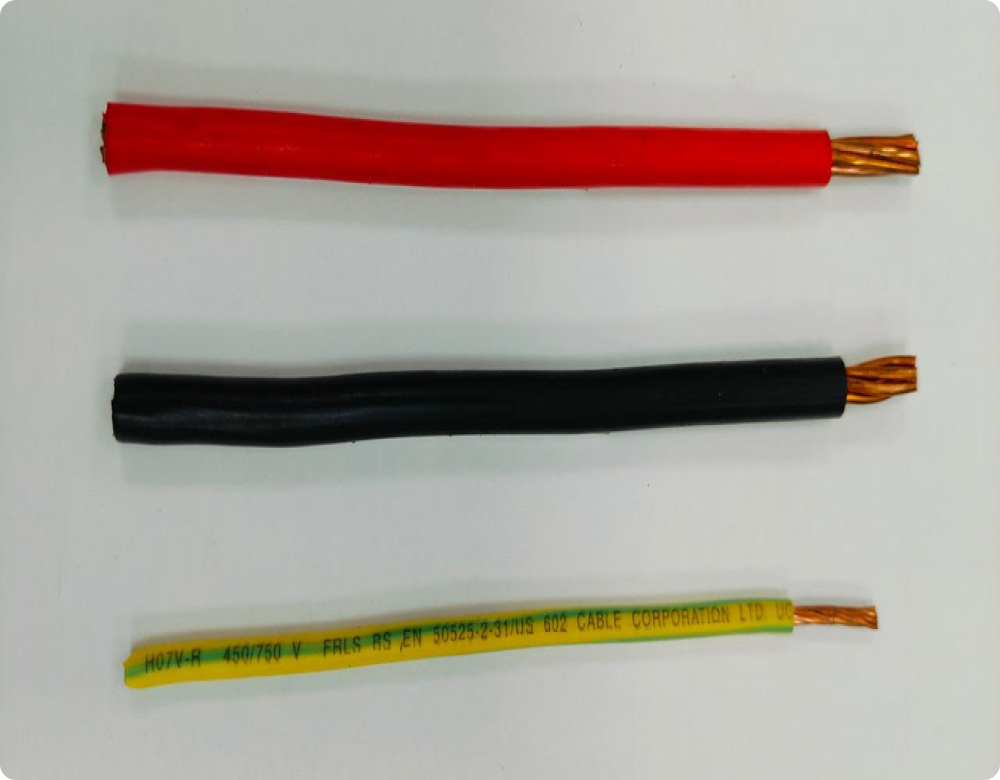Domestic cables
Product Description
Generally single-core cables, stranded, PVC insulated. Used in all types of residential, school, hospital, and commercial construction where the load is split into single phases and where the cables are placed in conduits in walls or in conduits on walls (i.e., the conduits are open to air).
The cable is made of copper and PVC insulated.
Cross Sectional Diagrams

Cable in Conduit in wall

Cable in Conduit on wall
The table below gives the sizes and current capacity of the most common sizes of domestic cables. These are stranded conductors, Class 2.
|
Nominal Cross Sectional Area Size: Sq mm |
Maximum Current (Conduit, in wall) at 40°C Amperes |
Maximum Current (Conduit on wall) at 40°C Amperes |
|---|---|---|
| 1.5 | 13 | 15 |
| 2.5 | 17 | 21 |
| 4 | 23 | 28 |
| 6 | 30 | 36 |
| 10 | 40 | 50 |
| 16 | 53 | 66 |
| 25 | 70 | 88 |
| 35 | 86 | 109 |
| 50 | 103 | 131 |
| 70 | 131 | 167 |
| 95 | 158 | 202 |
| 120 | 183 | 234 |
| 150 | 209 | - |
| 185 | 237 | - |
| 240 | 279 | - |
| 300 | 319 | - |
As a rule of thumb, if cables are fixed directly in open air and well spaced so that there are no other cables touching, they can carry 20% more current than indicated in column a) above.

We also make Twin ECC cables, which have a red core, a black core, and a common earth. These cables are made up to 10 sq mm size (for each conductor) and are generally used in smaller rooms and houses. These will generally carry the same current as the above cables, and the advantage of twin ECC cables is that they can be fixed directly on walls. They are mainly used where costs are a constraint, as they fulfill the function of three cores – live, neutral, and earth.

